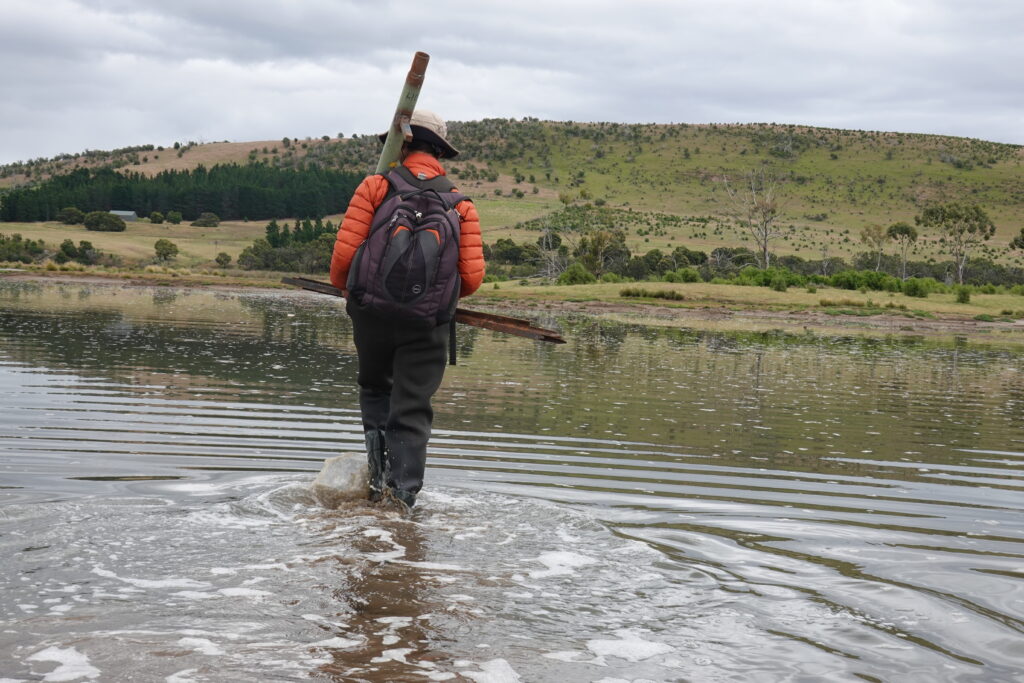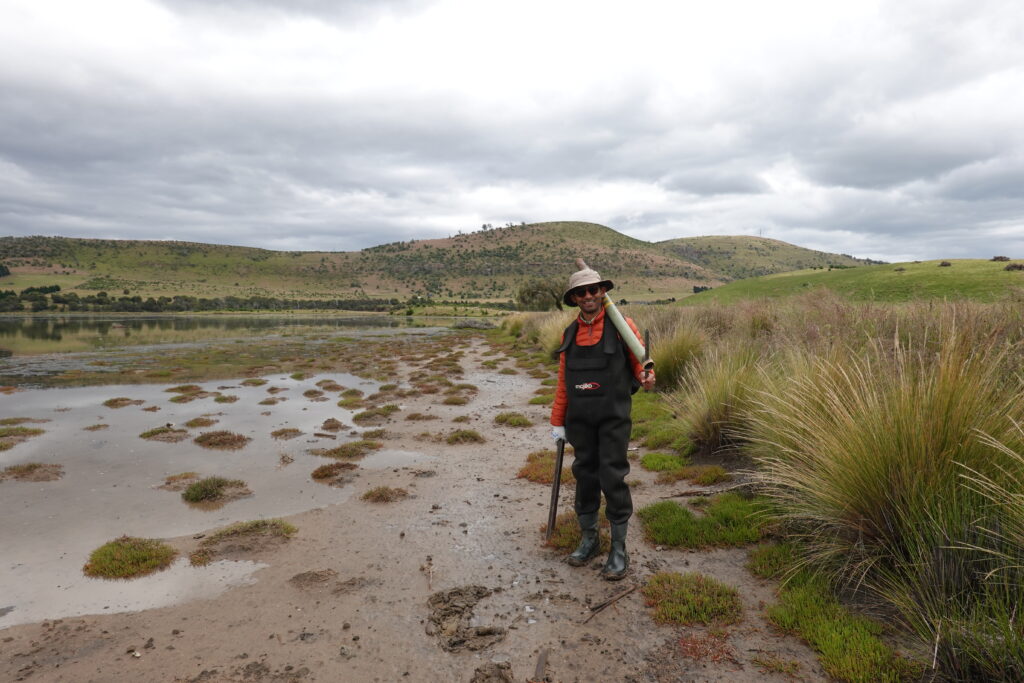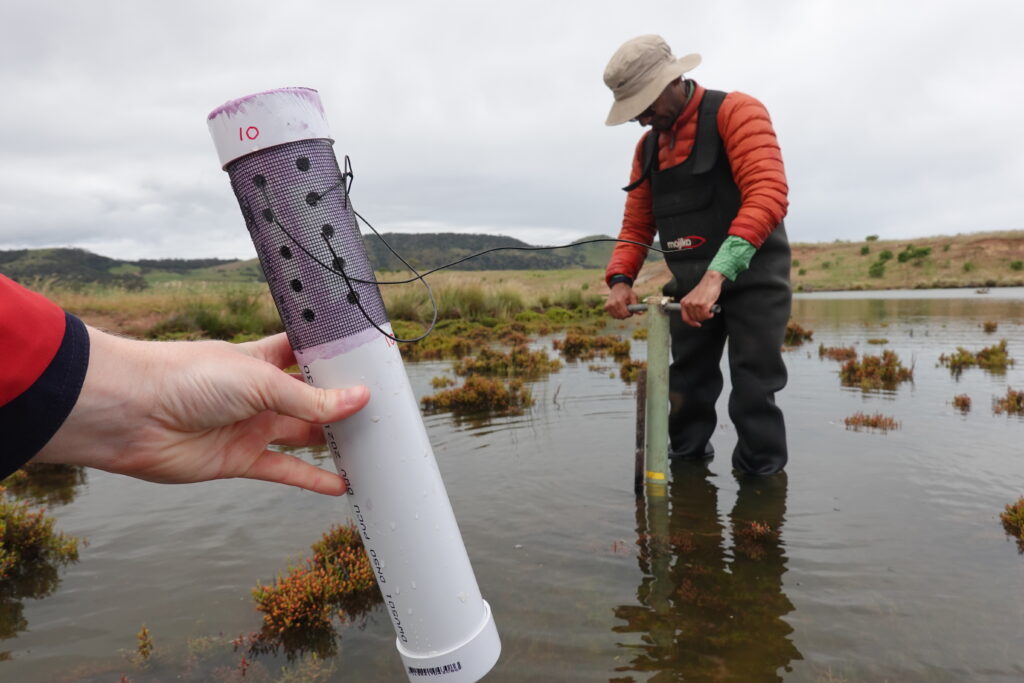Monitoring the effects of hydrological restoration on coastal saltmarsh regeneration and fish communities at Richmond Park, Coal River, Tasmania
Richmond Park Estate, a merino farm near the town of Richmond, Tasmania, is home to a 65ha degraded saltmarsh and floodplain area of Coal River.
NRM South are partnering with the University of Tasmania, OzFish Unlimited, and the property owners of Richmond Park Estate to restore this threatened ecological community.
The marsh is subject to both river and diurnal micro-tidal flows, with the main passageway of these flows altered with the installation of a levee. This has created a ponded marsh behind the levee that has been subject to degradation relative to the natural saltmarsh in front of the levee. A major action of the project is the removal of this levee to restore the natural tidal flow.
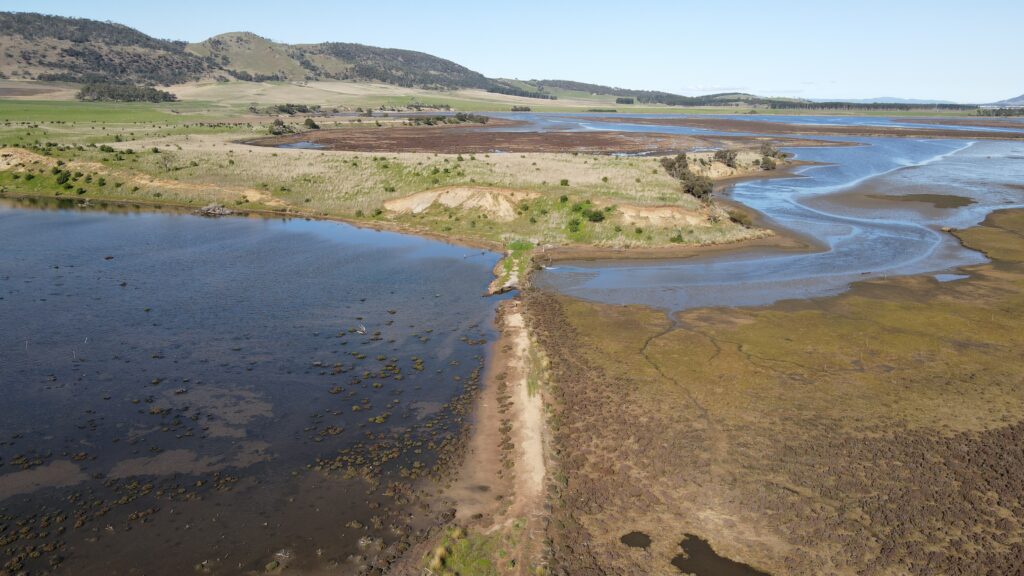
Prior to the removal of the levee, UTAS completed baseline hydrological monitoring to gain an understanding of the hydrology in terms of the water flows and water level differences between the ponded marsh behind the levee and the fronting marsh that is open to tidal exchange, on the Coal River side.
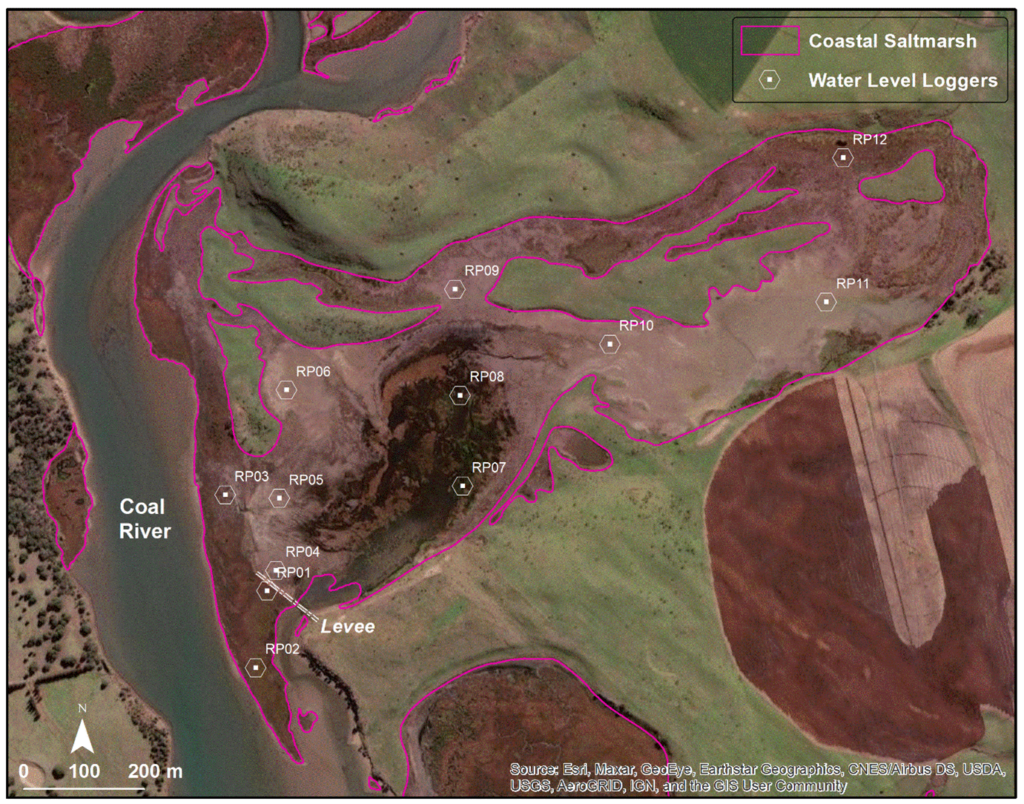
Water level data loggers were deployed across the length and breadth of the intertidal floodplain and left to collect data on water depth every 5 minutes for almost three months.
After the levee removal, this will be repeated to capture the ‘restored’ water levels. This will allow for a comparison of water levels before and after restoration and help evaluate the outcomes of levee removal on saltmarsh restoration.
